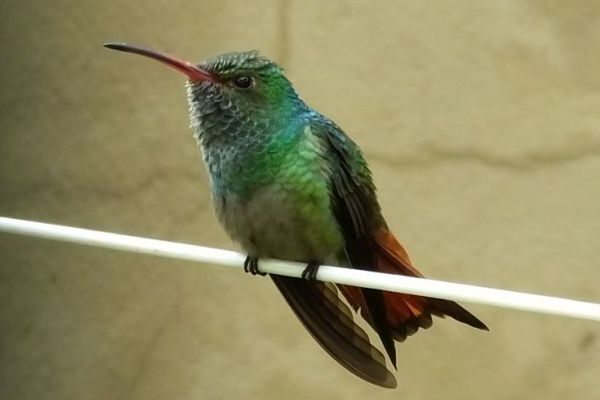
Hummingbirds are natural attention getters. Small as a bug, decorated with iridescent lights, and always in the mood for a fight, how can these real life fairies not take center stage? In Costa Rica, with around 50 hummingbird species on the list, we have our fair share of minute feathered stars. These unreal birds zip through every level of forest, use every habitat, and, like various others of their kind, several are found right in the garden.
It seems that as long one provides the right types of flowering bushes and trees, hummingbirds will do more than pay an occasional visit. Invariably, a few will also set up residence so they can take advantage of a good food source, food that they constantly need to uphold their hyper metabolic standards. In Costa Rica, garden hummingbirds vary by region and elevation but whether you are birding in the seasonally dry (or wet) middle elevations of the Central Valley, or checking out the many hummingbirds of the dripping cloud forest, you can be sure to cross paths with more than a few. These are the regular garden hummingbirds where I reside, the birds that live in the strip of riparian green just out back:
Rufous-tailed Hummingbird
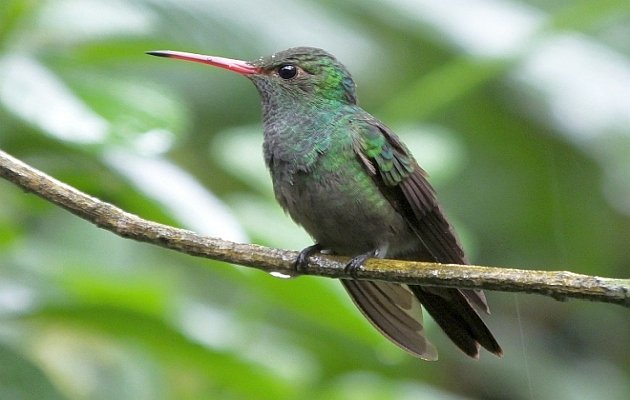
In the Central Valley and many other parts of Costa Rica, this bird with the reddish tail is our Ruby-throated, our Black-chinned or Anna’s. It’s the common edge hummingbird and in keeping with that denomination, it loves the garden. Venture outside at dawn and you can expect its descending trill, hear it sing from some hidden perch. As the day warms up, as with most other hummingbirds, you can also expect to see it chasing neighboring hummingbirds around, pretty much all day long.
Blue-vented Hummingbird
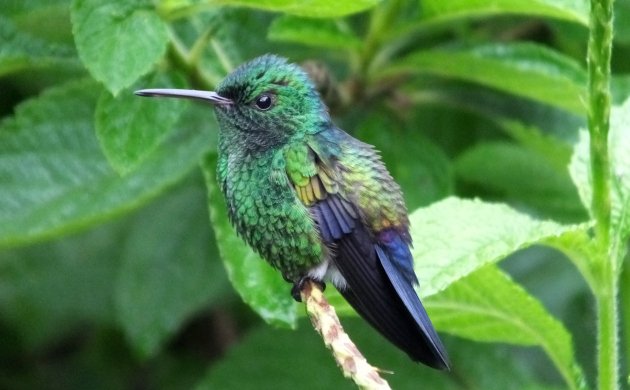
Formerly known as the Steely-vented Hummingbird, in Costa Rica, this basic green hummingbird is a common resident of dry and moist forest, mostly on the Pacific slope. Similar in size and shape to the Rufous-tailed, the Blue-vented may need a bit more forest but that doesn’t stop it from also feeding in edge and garden habitats.
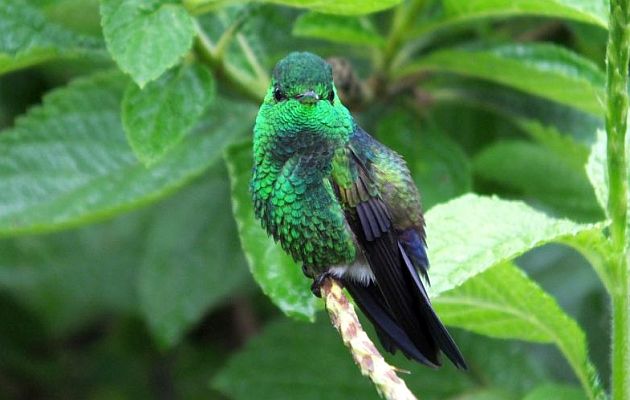
I feel fortunate to see one or more of this species on a daily basis.
Cinnamon Hummingbird
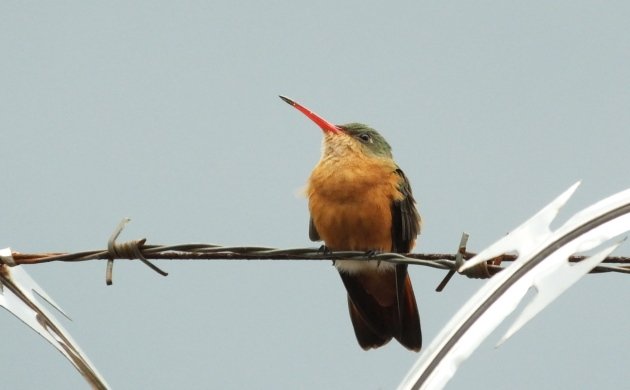
Hummingbirds tend to have cool names and this bit of dry forest spice is no exception. Replacing the Rufous-tailed in drier habitats, this species can show up in more open gardens or other spots that are just a bit more like its preferred dry forest habitat.
Green-breasted Mango
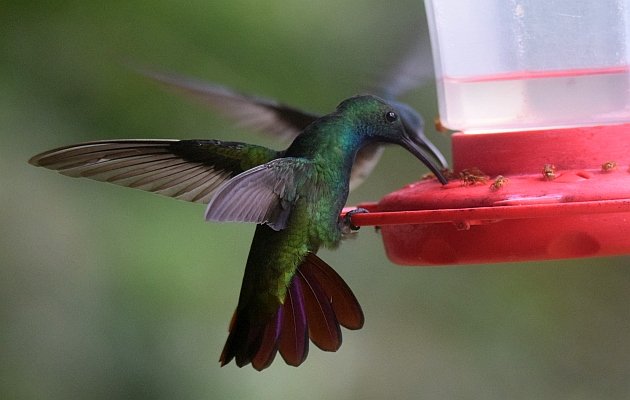
A medium/large hummingbird, as with so many other generalist and edge hummingbird species, the mango has a slightly curved beak that probably helps it feed from a wider selection of flowers. In the Central Valley, this bird might be somewhat seasonal, or, maybe it just wanders from one area of flowering trees to another. It seems to really like the Poro tree, an Erythrina species native to northern South America that has become well established in Costa Rica and used by many native and migrant birds.
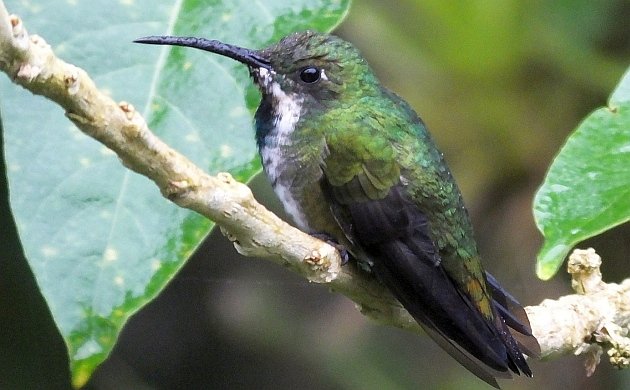
Canivet’s Emerald
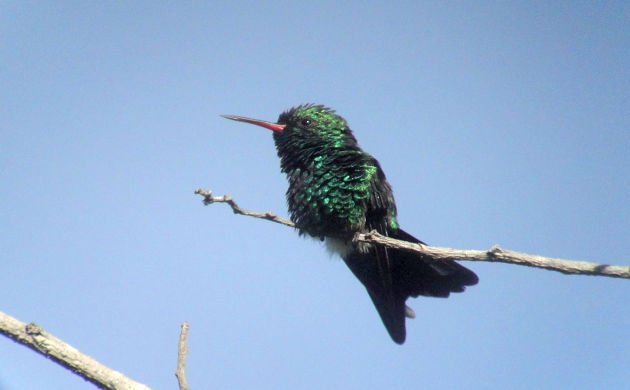
True to its name, this least common of resident Central Valley hummingbirds is a flying green gem. Being smaller than the other species, it seems to sneak in and out of their territories. I don’t see this one too often, it seems to be much more common in other, more wooded areas.
Plain-capped Starthroat
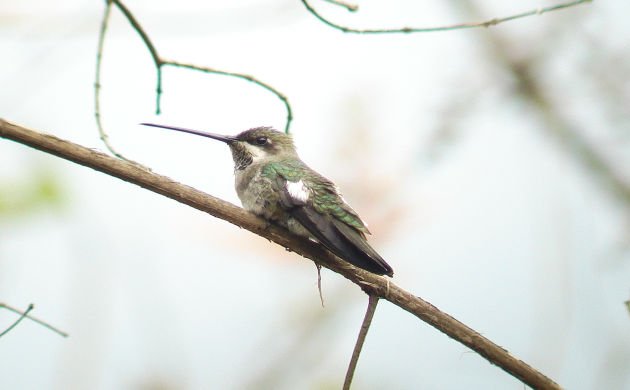
Yes, this fancy bird is the same species that ABA birders hope to chance upon in Arizona. If you get a chance to bird dry forest between there and here, you may notice that this long beaked bird is fairly common. In Costa Rica, it’s a bird of dry forest habitats including edge and riparian zones in the Central Valley.
Although the birds listed above are the most regularly seen hummingbirds where I live, if you go just a bit further afield, you can also find Blue-throated Goldentail, the larger than life Violet Sabrewing, Striped-tailed Hummingbird, and a few other species. Oh and lest I forget, as a bonus, during the winter months, we also get that classic eastern garden zinger, the Ruby-throated Hummingbird. Always ready and eager to entertain, expect a show from these sprite-like feisty birds when visiting Costa Rica.













Leave a Comment